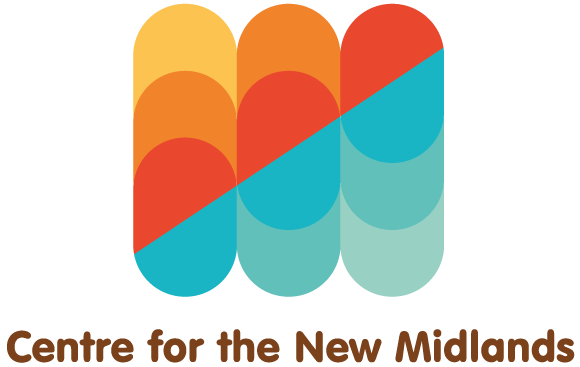
“As we step into 2024, imagine a vibrant community where mixed-use developments seamlessly blend residential, commercial, and healthcare facilities. Picture neighbourhoods adorned with accessible public spaces, parks, and recreational areas, nurturing the physical and mental well-being of older adults.”
In this article, Raynee De Zoysa (Senior Business Development Manager, Balfour Beatty & Member of CNM Infrastructure Board) explores how the challenge of addressing the Midlands’ ageing population through intergenerational development will become a focal point and megatrend in 2024.
(January 2024)
As a proud native of the Midlands, I’ve witnessed the transformation of our region through various redevelopments. Now, with an ageing population on the rise, it’s time to shift our focus and recognise the pivotal role that later living must play the future redevelopment plans. I find myself at the crossroads of excitement and controversy within the construction community. The challenge of addressing the Midlands’ ageing population through intergenerational development will become a focal point and megatrend in 2024.
But what is ‘later living’? It’s a term that captures the diverse types of accommodation designed for people in their later years. The demographic shift is real, backed by the latest Census, which reveals that one in five people in England and Wales is aged 65 or older. By 2043, a staggering 24% of the population is projected to be in this age bracket. This isn’t just a statistic; it’s a societal transformation that needs our attention and action.
Now, as a main contractor navigating this landscape, intergenerational development emerges as a response to the COVID-19 pandemic and the increase in demand for later living accommodation. It’s not just a departure from traditional living arrangements; it’s a vision of integrated, socially vibrant communities which go beyond generational boundaries.
The concept of intergenerational development isn’t just a buzzword—it’s a promise of shared spaces where older adults find companionship, and younger families benefit from the wisdom of their older neighbours. In an era of hybrid working, rising loneliness, and pressures on healthcare, fostering communities that look after each other is more crucial than ever.
Yet, with the promises come controversies and challenges. There is a delicate balance between meeting the needs of older adults for calm environments and accessible amenities whilst providing the vibrant, active spaces desired by younger generations.
Financial implications loom large, with unique design specifications, varied dwelling sizes, and diverse amenities adding to the cost. The viability of these projects is questioned—will the market respond positively, and do the benefits justify the investment? We have all witnessed the rise and fall of the retail real estate, is this concept a step too far into the unknown?
Market segmentation and resale value present additional concerns. Is there a sufficiently large market for potential buyers? Can dwellings hold their value when catering to unique needs, and can the appeal be maintained for resale?
The risk of social tensions within a blended community adds to the scepticism. The Midlands has an enriched multi-generational community of cultural backgrounds, and expectations could lead to conflicts that are challenging to navigate. The vision of a harmonious, intergenerational utopia may be more complex than we think.
However, embracing the challenges becomes an opportunity to build on the 15-minute city concept and reimagine urban living. The journey towards intergenerational development requires innovative solutions to create communities that stand the test of time. To find a ‘right size’ for the later living community and unlock the housing stock because of the later living community living in homes to big and difficult to manage. This re- balance can be re-organised and freed up for couples and families within the community.
In this article, I wanted to share my key considerations and observations for the future delivery of intergenerational schemes:
Cost-Effective Design Layouts:
In crafting cost-effective design layouts, I believe the commitment lies in early collaboration with built environment professionals. Together, this generates ways to seamlessly incorporate universal design elements without compromising quality. A phased construction approach and flexible spaces are not mere solutions; they are pathways to accommodating the diverse needs of the intergenerational community.
Flexibility in design is more than just adaptability; it’s a dynamic response to changing requirements. Embracing modern construction methods allows for an agile approach, ensuring ease in modifications and additions both on and off-site.
Material selection, to me, is an art of balance. Choosing materials that are both cost-effective and durable, such as high-performance insulation or recycled steel, is a testament to our dedication to longevity and sustainability. Minimal upkeep ensures our commitment to long-term cost-effectiveness.
Innovative Financial Models:
Navigating the landscape of financial innovation, the need for government incentives is key. Trials, like Melfield Gardens in south-east London, echo the need for more government and grant funding to unleash the full potential of intergenerational development, particularly during the critical early concept stages.
One well established model is the public-private partnerships (PPPs) which is a form of partnership between public and private sector organisations. This powerful alliance between the public and private sectors can offer the flexibility to tailor the roles and responsibilities to meet the unique demands of a project.
I won’t deny that the PPPs models are undoubtedly challenging to deliver however with robust and well-coordinated governance, can provide opportunities to bring together the resources, expertise, and powers available in ways that cannot be achieved by either sector separately.
In the context of PPPs in international developments, a commitment to this collaborative model will help drive how the needs of both older and younger generations are met.
Long-term value proposition is not just a statement; it’s essential to market the benefits of intergenerational developments. We need to emphasise the positive impact of community well-being, foresee increased property values, and envision an elevated social and economic mobility model for the region. The value proposition isn’t just compelling; it’s transformative evidence in gaining financial support.
Phased Construction and Planning:
It is important to plan the construction in phases to allow for the gradual development of the community. Start with essential infrastructure and amenities, ensuring that the initial phases meet the immediate needs of residents. As the community grows, additional phases can be implemented to enhance and expand facilities.
Prioritise community input in the planning process. Conduct regular assessments and gather feedback from residents to inform subsequent phases of construction. This approach ensures that the development aligns with the community’s vision and enhances the overall sense of belonging.
Overall, I champion the involvement of all stakeholders, from healthcare professionals to urban planners, contractors and consultants. A co-design approach, with active community participation, ensures inclusivity and relevance in every facet of the intergenerational development.
As we step into 2024, imagine a vibrant community where mixed-use developments seamlessly blend residential, commercial, and healthcare facilities. Picture neighbourhoods adorned with accessible public spaces, parks, and recreational areas, nurturing the physical and mental well-being of older adults. It’s about more than just constructing buildings; it’s about curating an environment where the elderly can thrive socially, culturally, and intellectually which results in a happier later living society. Let’s embrace the challenges and opportunities, collaboratively working towards making intergenerational developments a resounding reality across the Midlands.
The views reflected within this article of those of the author and do not represent Balfour Beatty Ltd or any other organisation.
ABOUT OUR AUTHOR:
Raynee De Zoysa is a work winning and business development professional with a dedicated focus on advancing sustainability, modern methods of construction (MMC), and digital solutions. Her commitment to pushing the boundaries is exemplified by her efforts to forge cross-sector partnerships and identify opportunities that underscore the vital importance of creating enriched spaces for local communities.
With her career origins as a site civil engineer, Raynee’s journey began with notable contributions, including her work on the London Olympics 2012. Over time, she has held pivotal roles in delivery and pre-construction across diverse sectors such as infrastructure, water, residential, and education, amassing a comprehensive skillset and a wealth of construction experience.
A chartered member of the Chartered Institute of Building, Raynee has demonstrated her commitment to excellence through her extensive involvement in major construction projects within the building sector. Leveraging the valuable insights acquired through her varied roles in the built environment, Raynee is dedicated to promoting STEM, sustainability, and the art of placemaking. Her passion extends to mentoring aspiring professionals, helping them uncover their unique talents and skills.
Raynee strongly advocates for the cross-pollination of ideas, embracing failures as learning opportunities, and the resilience to iterate and try again. Her involvement with the Nottingham University Career Advisory Committee showcases her dedication to shaping the educational landscape, facilitating seamless collaboration between academia and industry to foster innovation.
Furthermore, her active role as Chair of Governors for Fordbridge Community Primary School and as a Board Trustee for Prosper Together Multi Academy Trust (MAT) in Solihull stands as a testament to her deep commitment to community-level impact.
Raynee’s heart lies with her local West Midlands community, where she passionately contributes to the creation of educational spaces that empower children to flourish and become the best versions of themselves. Above all, her roots in the West Midlands are a testament to her unwavering commitment to the region, as she remains a true “brummie” at heart.
